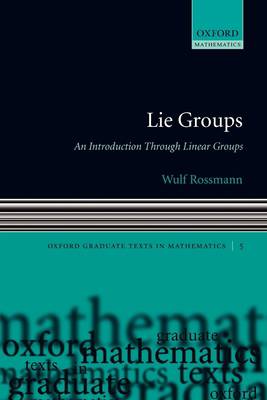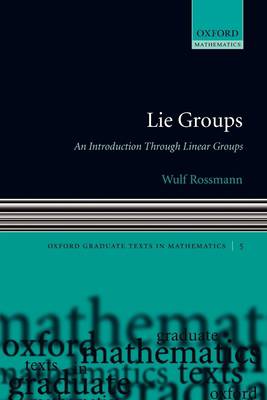
Bedankt voor het vertrouwen het afgelopen jaar! Om jou te bedanken bieden we GRATIS verzending (in België) aan op alles gedurende de hele maand januari.
- Afhalen na 1 uur in een winkel met voorraad
- In januari gratis thuislevering in België
- Ruim aanbod met 7 miljoen producten
Bedankt voor het vertrouwen het afgelopen jaar! Om jou te bedanken bieden we GRATIS verzending (in België) aan op alles gedurende de hele maand januari.
- Afhalen na 1 uur in een winkel met voorraad
- In januari gratis thuislevering in België
- Ruim aanbod met 7 miljoen producten
Zoeken
Omschrijving
This book is an introduction to the theory of Lie groups and their representations at the advanced undergraduate or beginning graduate level. It covers the essentials of the subject starting from basic undergraduate mathematics. The correspondence between linear Lie groups and Lie algebras is developed in its local and global aspects. The classical groups are analyzed in detail, first with elementary matrix methods, then with the help of the structural tools typical of the theory of semisimple groups, such as Cartan subgroups, root, weights and reflections. The fundamental groups of the classical groups are worked out as an application of these methods. Manifolds are introduced when needed, in connection with homogeneous spaces, and the elements of differential and integral calculus on manifolds are presented, with special emphasis on integration on groups and homogeneous spaces. Representation theory starts from first principles, such as Schur's lemma and its consequences, and proceeds from there to the Peter-Weyl theorem, Weyl's character formula, and the Borel-Weil theorem, all in the context of linear groups.
Specificaties
Betrokkenen
- Auteur(s):
- Uitgeverij:
Inhoud
- Aantal bladzijden:
- 276
- Taal:
- Engels
- Reeks:
- Reeksnummer:
- nr. 5
Eigenschappen
- Productcode (EAN):
- 9780199202515
- Verschijningsdatum:
- 24/08/2006
- Uitvoering:
- Paperback
- Formaat:
- Trade paperback (VS)
- Afmetingen:
- 153 mm x 235 mm
- Gewicht:
- 426 g

Alleen bij Standaard Boekhandel
+ 354 punten op je klantenkaart van Standaard Boekhandel
Beoordelingen
We publiceren alleen reviews die voldoen aan de voorwaarden voor reviews. Bekijk onze voorwaarden voor reviews.









